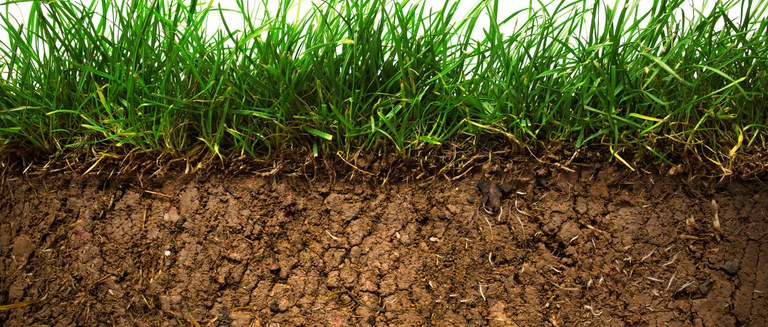Let me ask you a question. What is the most important element in having and maintaining a nice looking lawn? Is it premium grass seed? The best fertilizer? The grass itself? While all of those and more are important, the number one component of a healthy lawn is your soil. Simply put, good soil will yield good grass. Your soil does a lot for your lawn.
Humic Acid is one of the secret weapons to having a nice lawn. Speaking from my own experience, when I began using it, I saw my lawn thrive.
What it is:
Humic acid is the result of the natural break down of plant and animal matter. In essence it is very concentrated organic matter. Most often it comes from leonardite. These are naturally oxidized deposits of lignite, or sedimentary rock formed from compressed peat.
Humic acid is often sold together with fulvic acid. These elements both work to improve your lawn. They very in regards to carbon and oxygen content, acidity, degree of polymerization, molecular weight and color.
What it is not:
Humic acid is not a fertilizer. It is a soil conditioner than can help your lawn make better use of the nutrients in the soil.
How does it help your lawn?
- It improves the structure of your soil, with benefits of:
- Preventing soil erosion and surface water run off.
- Helping to loosen the soil, promoting oxygen and water flow
- Improving soil-water retention, thus helping to resist drought
- It causes chemical changes in the soil, offering benefits of:
- Neutralizing acidic and alkaline soils, regulating pH levels
- Improving the uptake of nutrients by the grass plant
- Acting as a chealator for metal ions, improving their absorption by the roots.
- Retaining water soluble inorganic fertilizers in the root zone, decreasing nutrient leaching
- Reducing phosphorus binding to Ca, Fe, Mg, thus freeing it up to be used by the grass plant
- It improves the biological make up of the soil, with benefits of:
- Stimulating and improving production of plant enzymes
- Promoting desired microorganisms in the soil
- Enhancing resistance to disease
- Stimulating root growth
- Aiding in photosynthesis
- Improving seed germination and crop production.
How to Apply it
Humic acid can be applied in a liquid form (sometimes used in a powder form that is mixed with water) or granular form.
While it is best to follow the manufacturers recommended rates. Know that this will not harm your lawn if you over-apply.
Liquid application : A good rule of thumb when applying it as a liquid is to apply 2-6 oz per gallon for 1000 sq feet.
Ortho dial and spray:
Application rate:
For this example I will apply 3 oz/ 1000 sq feet.
If my lawn is 2500 square feet, then I will need to put 7.5 oz (3 x2.5) in the sprayer.
Settings:
The sprayer puts out 2 gallons per minute. The dial determines how many oz is drawn from the unit per gallon. If you set the dial to 8 oz (the unit will draw 8oz for every gallon) there will be 16 oz drawn every minute. This means that with the unit filled all the way to 32 oz (7.5 oz plus water) you will have 2 minutes to spray.
Back-pack sprayer:
Application rate: dilute 4 oz per 1 gallon of water for every 1000 square feet.
Granular application:
40-200 lb/ acre
A word of Caution
Because humic acid is a relatively new product to many consumers, manufacturers will try to take advantage of you and sell poor quality products. Know where your humic is sourced from. Again, nutrient rich leonardite deposits are the best. Coal-based humates that are waste products from coal mining are the worst kind. Also be aware of how the product was sourced. Look for a product with a good track record and consumer review.


Amick Rollaerator is so lightweight and easy to use, you can aerate your lawn in minutes!
Thanks! That looks much easier than renting a machine from the local store.